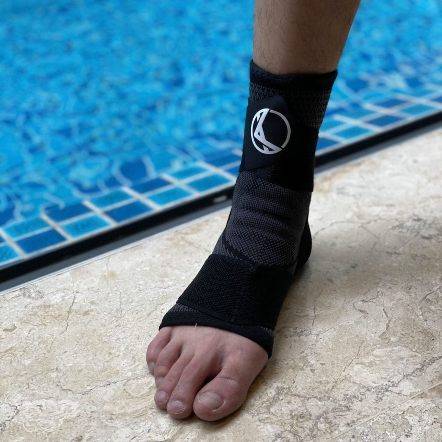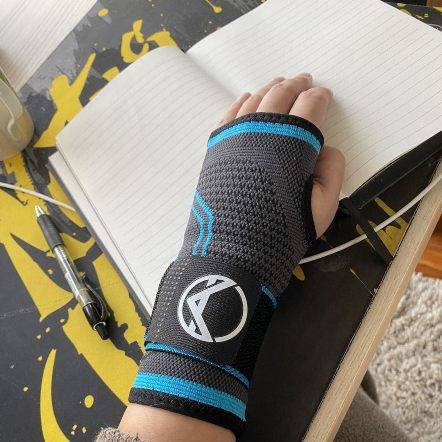
How Long Should You Wear a Back Brace During the Day?
july 6, 2023 | 4 Mins Read
TABLE OF CONTENTS
Wearing a back brace can give you relief both immediately and over time, while also helping your body perform more efficiently by alleviating pressure on certain parts of the spine.
However, it's important to know how long should you wear a back brace each day for it to be effective without any adverse effects on health; this post will discuss that very topic! We’ll explore when and how long is appropriate for its use.
By understanding these practical insights into using braces effectively, you can go about managing pain proactively with confidence. So let us take a look at all those details together now!

A back brace serves as a valuable component of a comprehensive treatment plan for specific spinal conditions and can provide essential support during the healing process following back surgery. The prescription of a back brace typically encompasses several complementary goals:
The aforementioned goals are achieved through the mechanisms of the back brace during its usage. While the specific mechanisms of pain relief may vary based on the type and design of the brace, the general functions of a back brace include:
Studies have shown that the addition of a back brace to a treatment regimen can enhance mobility and pain scores more effectively than physical therapy and pain medication alone. However, further research is necessary to validate these findings and provide more comprehensive evidence.
When it comes to wearing a back brace throughout the day, several factors should be considered to determine the appropriate duration for its usage. Taking these factors into account will help you make an informed decision about how long you should wear a back brace:
The severity of your back pain or injury is a critical factor in determining the duration of back brace usage. For mild conditions, wearing the brace for shorter periods may be sufficient to provide support and aid in recovery. However, more severe cases may require longer durations of brace usage as recommended by your healthcare provider.
Your healthcare provider will develop a personalized treatment plan based on your specific condition. This plan may include wearing a back brace in combination with other therapeutic interventions or exercises. It is essential to follow the prescribed treatment plan to achieve optimal results and ensure the appropriate duration of back brace usage.
Listening to your body and evaluating your comfort level while wearing a back brace is crucial. If you experience discomfort, pain, or any adverse effects while wearing the brace, it may indicate the need to adjust the duration of usage or seek guidance from your healthcare provider. It is important to find a balance that provides adequate support without causing unnecessary discomfort or strain.
As you progress in your recovery or treatment, the duration of back brace usage may be adjusted. Regular evaluation by your healthcare provider will help determine if there is a need to modify the duration based on your improving condition. They can guide you on when it is appropriate to reduce or discontinue the use of the back brace.
Consider your daily activities and lifestyle when determining the duration of back brace usage. If you engage in activities that put additional strain on your back, such as heavy lifting or prolonged sitting, wearing the brace during those times may be beneficial. However, for less demanding activities or when you are resting, it may be appropriate to remove the brace to allow your muscles to work naturally.
Ultimately, the guidance and expertise of your healthcare provider are invaluable in determining the duration of back brace usage. They have a comprehensive understanding of your condition and can tailor the recommendations to your specific needs. Regular communication with your healthcare professional will ensure that you are using the back brace for the appropriate duration and achieving the best possible outcomes.

The duration of wearing a back brace during the day depends on your specific condition. For pain relief, it's recommended to wear it most of the day, especially when traveling. In cases like scoliosis, the brace should be worn for over 20 hours a day until skeletal maturity is achieved, then gradually reduced to only wearing it while sleeping.
Lumbar belts for fractures may be worn all day and night but can be removed for cleaning and bathing. If you've had surgery, consult your surgeon for specific instructions. Metal implants or major surgeries often require wearing the brace all day for 1-2 months. Minor surgeries may not need as long. Always consult your healthcare provider for personalized advice.
Safety is of utmost importance when using any medical device, including a back brace. While wearing a back brace all day can offer additional support, it is crucial to use it correctly and in moderation.
Prolonged and excessive usage of a back brace may result in muscle weakness and dependence on the brace, potentially exacerbating your condition in the long term. Therefore, it is highly recommended to consult a healthcare professional or a qualified orthopedist before extensively using a back brace.
They will provide guidance based on your specific condition and the type of brace prescribed. Here are some important aspects your doctor may address:
Following their guidance will help ensure the safe and effective use of the back brace while promoting your overall well-being.
The effectiveness of a back brace relies on striking the right balance in its usage. It is crucial to wear the brace during activities that could potentially strain your back, like lifting heavy objects, sitting for extended periods, or engaging in intense physical exercises. However, it is equally vital to allow your muscles to work naturally without the constant support of the brace. This helps maintain muscle strength and prevents over-dependence on the device.
To find the right balance, it is essential to be attentive to your body's signals. If you experience discomfort or muscle fatigue while wearing the brace, it may be an indication that you need to take a break from it. Your doctor can advise you on the optimal usage schedule that aligns with your specific condition.






References
Author

Claire Evans worked as the content marketing manager at Koprez. Claire combined a background of writing and editing, marketing, and patient education to best serve consumers, fitness enthusiasts, athletes, and anyone who relies on the Koprez brand for helpful information.
Koprez® Featured Products


"I sprain my wrist super often, so I decided to try out this sleeve. This is game-changing! I've been using it for a while now, and my wrists feel amazing. I haven't gotten in any injuries since using it too. It just makes my wrists feel so supported."
Alexis A.


"Use this for my boxing training. It is a very comfortable brace and does not move out of position during skipping ropes and sparring sessions. I use it while running too. Probably the best brace I've purchased throughout the years. It is very flexible. Makes me look like a pro! :)"
Samuel L.


"I've just got back to running after a couple of years of being plagued by injury. These compressions socks are helping give me peace of mind while I build up my distance again. They are the perfect level of compression, super comfy, and very high quality. Feel great while on a run, and looks great in the orange colour I have!"
Dave R.


"I have a weak ankle, and the Koprez ankle sleeve has been a lifesaver. Wear it every day. Super breathable and comfortable. Like wearing a cool sporty looking sock!"
James F.


"This is the best knee sleeve I've ever tried. It's now a must-have for all my exercises. A few years ago, I had an accident that damaged my knees, but with Koprez I can be active again with no knee pains at all. It's been truly amazing!"
Alex M.


"One of the best purchases I've ever made. It fits your legs all the way from top to bottom, great snug fit, gives you support and definitely helps during rehab and training."
Rafael A.


"I had a minor elbow injury, and Koprez sleeve was super supportive and definitely helped me recover faster. I still use the sleeve to prevent further injury. So far, so good. Very comfortable and does not feel hot at all. Highly recommend!"
Corey B.


"It's really been a game-changer for me. It allows me to exercise a lot longer than I used to. Now my knees don't hurt, and they're not uncomfortable at all."
Mike P.


"Great product!!"
Harold


"I have carpal tunnel, and this brace has helped me work pain-free. Love the materials, and I can feel my wrists slowly getting better, even when I don't wear them!"
Christopher J.


"I wanted to try out these sleeves to improve my squats and deadlift in the gym without worrying about injuring my knees. They stayed up throughout the entire gym session, and my knees feel super supported. Now I can do what I love for years to come. "
Corbin C.